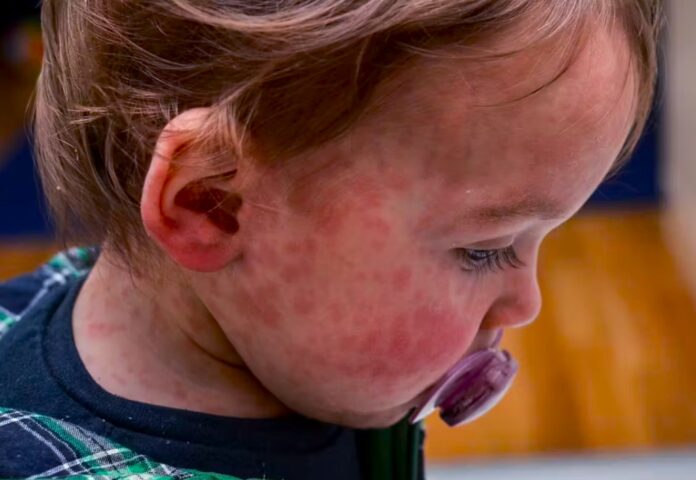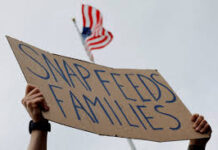
In the wake of a measles outbreak in Canada that has infected thousands of people over the past year, an international health agency revoked the country’s measles-free status on Nov. 10, 2025.
The Pan American Health Organization, which serves as the World Health Organization’s regional office for the Americas, made this announcement after the agency’s measles elimination commission met in Mexico City to review the latest public health data.
As a global health epidemiologist who studies the spread of infectious diseases, this change in status does not surprise me. Measles is highly contagious, and a drop in childhood vaccination rates in Canada and in other countries has left many children unprotected from the disease.
The resurgence of measles in Canada after decades with very low numbers of cases is not an isolated problem. The U.S. has also had large outbreaks of measles this year, and it will likely soon lose its measles-free designation as well.
The loss of measles elimination status is a symptom of a deeper issue: declining trust in public messaging about science and health, which has led to decreased vaccination rates and growing vulnerability to vaccine-preventable diseases.
What does it mean for a country to be measles-free?
Measles is one of the most contagious diseases on the planet. Before the measles vaccine was licensed for use in 1963, nearly every child got measles infection and more than 2 million children died from measles each year.
The vaccine decreased that risk dramatically. By 1968, five years after the vaccine became available, case counts in the U.S. had dropped by more than 95%. Cases in Canada also decreased substantially after the vaccine was introduced.
Tragically, about 100,000 children still die from measles each year even though a safe, effective and low-cost vaccine is available. Almost all of those deaths occur in low-income countries where many children do not have access to recommended vaccines.
The World Health Organization uses three labels to describe how well a country is preventing the spread of infectious diseases such as measles. A disease is said to be controlled when public health interventions such as routine childhood vaccinations significantly lower the rate of new infections. A disease is considered to be eliminated from a country when the only cases that happen are small outbreaks linked to international travel. And finally, a disease is deemed eradicated only after several years of no cases occurring anywhere in the world.
To achieve the status of measles elimination, a country must have no ongoing local transmission of the disease for at least one year. It will lose that status if it has a chain of cases that spread from person to person for more than one year.
Once a country has eliminated measles, there is almost no risk from the disease as long as vaccination rates stay high. But when vaccination rates drop, outbreaks will soon start happening.
What happened in Canada?
In 1998, the Pan American Health Organization confirmed that Canada had eliminated measles transmission. Two years later, the U.S. also gained the measles-free designation.
By 2016, every country in the Americas had achieved measles elimination status. The region lost that status in 2018 after outbreaks in Brazil and Venezuela, and then regained it in 2024.
But childhood vaccination rates have been falling worldwide, especially during and after the COVID-19 pandemic. To protect communities from measles outbreaks, about 95% of the population must be vaccinated against the disease.
In Canada, the percentage of 2-year-olds who have received at least one dose of measles vaccine dropped from about 90% in 2019 to about 82% in 2022 and 2023. As the number of unvaccinated people in the population increased, the risk of measles outbreaks grew.
After having only 16 total cases of measles nationwide between 2020 and 2023, the number of measles cases in Canada jumped to more than 100 in 2024 and more than 5,000 cases in 2025. Cases have occurred among infants, children and adults in every Canadian province in 2025, and two infants have died.
Fewer than 10% of the people who have gotten sick had been vaccinated against the disease.
What happens next?
It is likely that both the U.S. and Mexico will lose their measles-free designation in 2026, because both countries have had sustained outbreaks of measles since early 2025.
Although more than 90% of kindergartners in the U.S. are vaccinated against measles, that rate is too low to protect communities from outbreaks. An outbreak that started in Texas in January 2025 infected more than 760 people and caused the deaths of two children.
In total, more than 1,600 Americans in more than 40 states have gotten sick from measles in 2025. That is more cases than any year since 1992. More than 90% of the people who got sick were unvaccinated.
Mexico has also had thousands of measles cases this year, mostly among unvaccinated people.
Central America, South America and the Caribbean will retain their measles-free status for now. But the outbreaks in North America increase the risk of measles spreading to other countries.
Without a significant improvement in vaccination coverage and public trust in community health measures, many countries are likely to face more, and bigger, outbreaks of measles and other vaccine-preventable diseases in the coming years.![]()
Kathryn H. Jacobsen, William E. Cooper Distinguished University Chair, Professor of Health Studies, University of Richmond
This article is republished from The Conversation under a Creative Commons license. Read the original article.


















